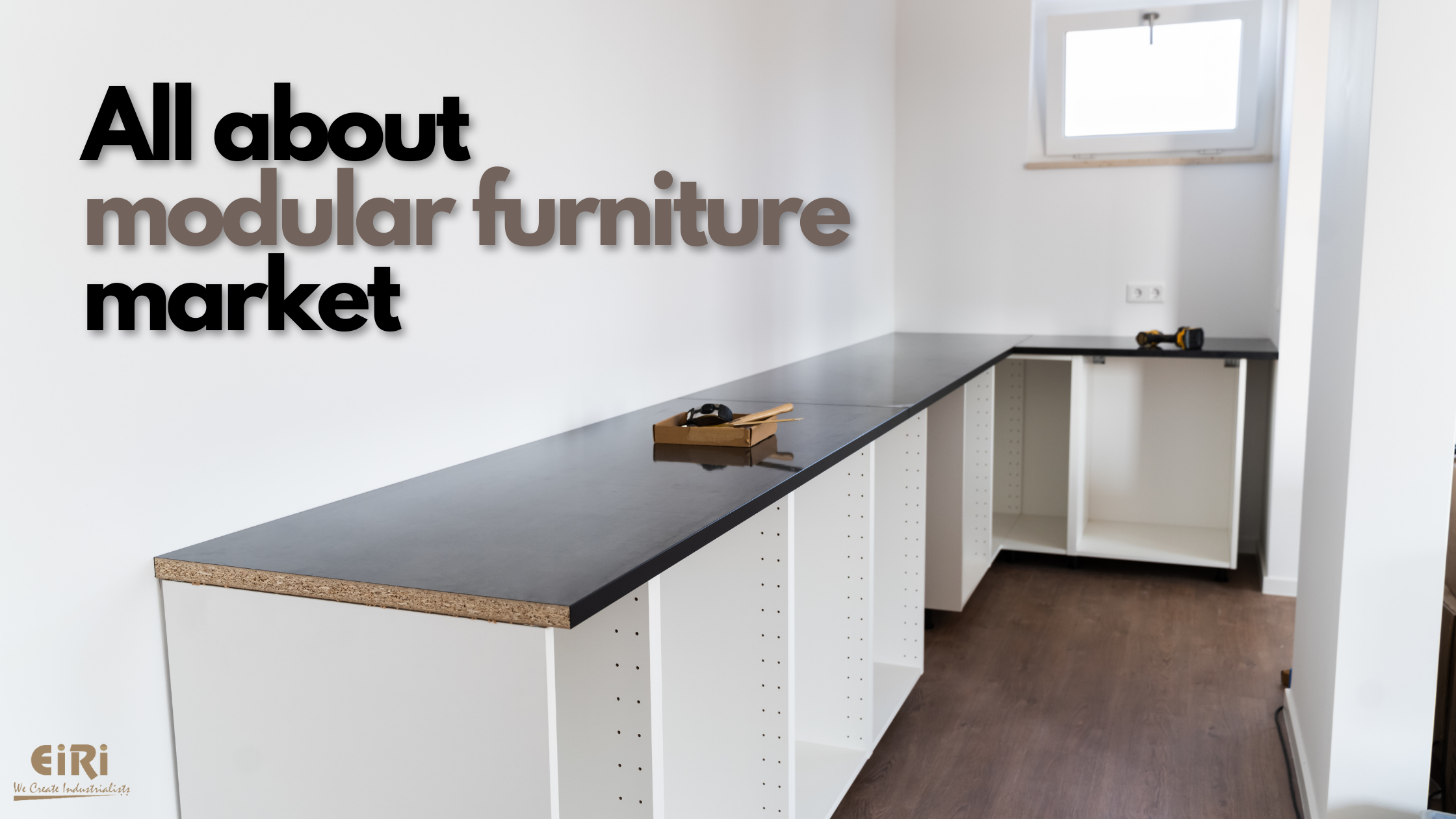Modular Furniture: Assessing Market Health and Deciphering the Opportunities
The modular furniture industry is on the rise, and much can be attributed to the increased purchasing of wood/bamboo and increased collaboration and management between the few unorganized sectors like non-branded cheap producers & carpenters. Not to mention that procuring raw materials and manufacturing pre-laminated fibres are also part of the process.
Project report for Bamboo wood products Industry
Market Overview
Those businesses/individuals willing to pursue the modular furniture business must know that there is a straightforward relationship between the per capita income and furniture consumption — out of which almost 40% of the furniture consumed primarily goes towards furniture modulations.
Thus, beyond a certain point, the modular furniture industry accounts for an exceptional ROI (return on investment) for those interested in investing in this sector. According to industrial experts, modular kitchen furniture alone accounts for a 1500 crore annual turnover globally.
It’s noteworthy that for furniture manufacturers, the modular furniture industry is at its developmental stages. Several factors that would contribute to the growth of modular furniture in India, in particular, are cited below:
- The formation of nuclear families,
- Increased affordability of quality products,
- Growth in disposable incomes.
- Housing projects initiated by the government
- The eCommerce development boosting the sale of modular furniture, especially in otherwise remote areas
The Indian market growth in terms of modular furniture closely resembles the below-given data:
Status in Indian markets:
Market Size: $17.77 billion
Forecasted Market Size: $37.72 billion by the end of the year 2026.
CAGR: >13.37% (in the next five years will be)
The above data is reflective of the fact that the modular furniture market would provide a significant scope of growth in the coming five years for those investing now. If you look at the industry presently, it is not too segmented and scattered. The scope of encountering go-betweens is also terribly low for those who can procure raw materials efficiently. That way, this industry offers an extensive scope even to the smaller players, in particular.
Even though segmentation is undersized at present, a few sub-segments do influence the market. If you look closely, despite the sub-segmentation, the market would only seem to be booming in the right direction, thus, complementing the profit-making endeavours.
Market Segmentation Forecast
Even though the market is not widely segmented relative to other industries, the existing segmentation does contribute significantly to the market’s overall growth. The below segregations can give you an idea as to how much profit you can draw from them.
1. Wood procurement
The Indian wood panel industry costs INR 28,000 crores. The CAGR is expected to progress by 6-7% in the wood panel industry in the coming five years.
2. Plastic industry growth
A CAGR of 8.51% was seen from 2015-2019. A CAGR of 26.7% is expected in the next five years, and it would expand to a $204.8 billion industry by 2025.
3. Woodworking machinery
It is estimated to reach $6.05 billion by 2028, and a CAGR of 3.9% between 2021 to 2028 is expected.
4. Bamboo material boards
The bamboo material boards will add up a CAGR of 2.9% to 6.5% from 2020 to 2026. Currently, the US bamboo plywood market alone stands at $13.3 billion (a reference to the opportunities this sector can create).
5. Furniture production
The annual market growth of furniture production from 2021 to 2025 will be 4.71% CAGR as per estimation.
Market Share and Future Forecast
With India and China comfortably placed in the world market, the future of modular furniture and its extensive use in homes will be guided by the market growth in Asian countries. The Asia Pacific modular furniture market revenue in the year 2020 contributed up to 42%.
As far as the global market is concerned, it will expand significantly, reaching $800,596 million by the end of 2025 and advance at a healthy CAGR of 3.5% between 2018 and 2025.
Even though the level of consumption varies between different financial segments of the society, the furniture market is receiving a massive boost from the Indian government. This is due to the increased housing constructions undertaken by the government for the poor and the lower middle-class communities across the country.
Additionally, the well-to-do have the resources and the ability to procure the raw materials easily from the market to create and use modular furniture in their homes. To that end, the residential segment is turning out to be a significant player in furniture consumption, at least until the year 2025.
It is also estimated that almost 40% of India’s population will migrate to cities by the end of 2025. This, too, would have manifold positive influences on the modular furniture market’s growth.
Conclusion
Given all these factors working positively for the modular furniture industry, there is an excellent scope for those planning to steer into it. But before individuals target to enter this field, it is pertinent to hold the right information in one’s hand. Having the correct detail and accurate figures will prompt the proper steps in the modular furniture industry. Therefore, try going with the indispensable information delivery players who will provide the perfect information, crucial in developing the correct perspective in the modular furniture industry.
Wooden furniture manufacturing, saw mill project report, project proposal for furniture manufacturing




